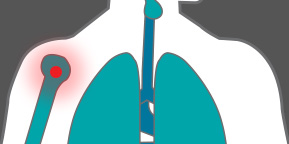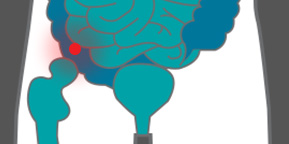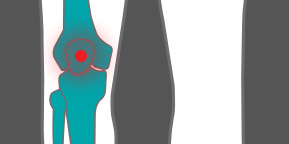
Invasive, Non-Invasive Or Minimally Invasive? Know Your Options
Undergoing surgery or any medical procedure can be a worrying time, but knowing what to expect during and after the process helps you to be well-prepared. What you experience and how each process affects you depend on the methods and technologies used to diagnose or treat a specific illness or injury. Broadly speaking, these different procedures are performed in one or a combination of three ways – invasive, non-invasive or minimally invasive.
Medical procedures that are non-surgical are deemed non-invasive. Diagnostic physical examination and imaging studies, such as ultrasounds and rehabilitative treatments such as chiropractic manipulation are examples of non-invasive procedures. In Summary, they are non-invasive because they do not break the skin in a way that surgery does.
In surgical procedures, major open surgeries are highly invasive as they require the surgeons to make long incisions to the body.
However, with remarkable technological developments, a third choice, the less invasive surgical option, has been made available through Minimally Invasive Surgery (MIS). Here, incisions are small and the procedure is performed by a specialist MIS surgeon. As a result, patients can expect to experience less post-operation pain and heal faster.
Minimally Invasive Surgery – Where Less Is More
MIS has transformed the surgical world, giving more benefits to patients. MIS is performed in General Surgery and across a broad spectrum of specialities such as Gynaecology, Orthopaedic and Urology. Instruments and methods are varied, but overall, their technological superiority ensures minimal damage to structures whilst striving to attain the same results as open surgeries. Among the commonly known MIS procedures are Laparoscopy in General Surgery and Arthroscopy in Orthopaedics. These are also referred to as Key Hole Surgery.
During MIS, a miniature camera (endoscope, laparoscope or arthroscope) attached to a long thin tube, is inserted through one of the small incisions. The projected image on a monitor gives surgeons a magnified view of the surgical area. In the skilful hands of an MIS specialist, the state-of-the art surgical tools are inserted into the body through small incisions of around 0.5–1.5cm and, with the aid of the camera, treatment can be carried out without causing extensive damage to the tissues.
MIS has given patients a wide range of advantages not found in conventional surgical procedures, including reduced pain and rapid recovery after surgery.

Minimally Invasive Surgery (MIS) Service in GKL
MIS in General Surgery and Orthopaedic was part of the initial services when the hospital started in 1996.
MIS Evolution in General Surgery
General surgeons performed the first laparoscopic cholecystectomy 20 years ago, followed by laparoscopic appendicectomy and now the whole range including colectomy, nephrectomy and also video assisted thoracoscopic surgery (VATS).
MIS Evolution in Orthopaedic
The initial operations were arthroscopic surgery of the knee such as meniscus procedures and reconstruction of the Anterior Cruciate Ligament (ACL). This gradually expanded to arthroscopic procedures of the shoulder followed by procedures to the ankle and to a lesser extent of the elbow and wrist. The spine surgeons also perform MIS procedures such as endoscopic discectomy and nucleoplasty.
Note:
Explore the Types of MIS in Different Treatment

Laparoscopic Cholecystectomy
The efficient gall bladder removal approach

The surgical procedure to remove the gallbladder is known as Laparoscopic Cholecystectomy. The main advantage of the laparoscopic cholecystectomy is that incisions can be as tiny as 1 cm which may be adequate to take the gallbladder out.
Shoulder Arthroscopy
Diagnosis, treatment and prevention with minimal distress

The Minimally Invasive technology used in shoulder arthroscopy ensures accuracy and efficiency in the diagnosis and treatment of shoulder injuries such as torn cartilage, frozen shoulder, frayed or inflamed biceps. This Minimally Invasive type of surgery is also used as a preventative move to stop further deterioration of the joint in the shoulder.
Laparoscopic Appendectomy
Cutting edge appendix removal

The treatment for appendicitis or the inflammation of the appendix is surgery. Today, the surgical procedure for the removal of the appendix which is considered highly efficient is laparoscopic appendectomy. This cutting edge surgical procedure is facilitated with the use of the laparoscope, a narrow tube camera that captures the internal image of the abdomen which is gas-inflated for better identification of and access to the appendix.
Knee Arthroscopy
Precision method brings swift knee recovery

The preferred surgical option to treat knee injuries and joint problems today is knee arthroscopy. As compared to conventional surgery which cuts through large sections of the knee structure, arthroscopy’s precision surgery is designed to cause minimal damage to tissues. This results in reduced post-operation pain and rapid recovery. Knee arthroscopy is used to treat a range of knee problems such as meniscus tears, arthritis and ailments related to damaged cartilage and ligaments.
Laparoscopic Hernia
Advanced hernia surgery lessens trauma

Most people who undergo a laparoscopic hernia repair can return to normal light activities in a very short time compared to those undergo conventional surgery. The tiny incisions made just below the navel to allow the laparoscope and other small instruments to pass through improves surgery experience. And, if hernia is on both sides of your abdomen, this can be addressed in just one laparoscopic procedure.
Ankle Arthroscopy
Ankle problems efficiently treated with surgical precision

Ankle arthroscopy is a minimally invasive surgical procedure which uses keyhole incisions to diagnose and treat conditions related to the ankle. Using a state-of-the art technology, it relies on a fibre-optic camera and surgical tools which are small enough to be inserted into the ankle joints for an efficient treatment. Ankle arthroscopy is commonly performed to treat arthritis, ankle pain and impingement and repair ligament tears. This procedure minimises damage to nerves, vessels and tissues around the ankle.


Wait a minute

Wait a minute